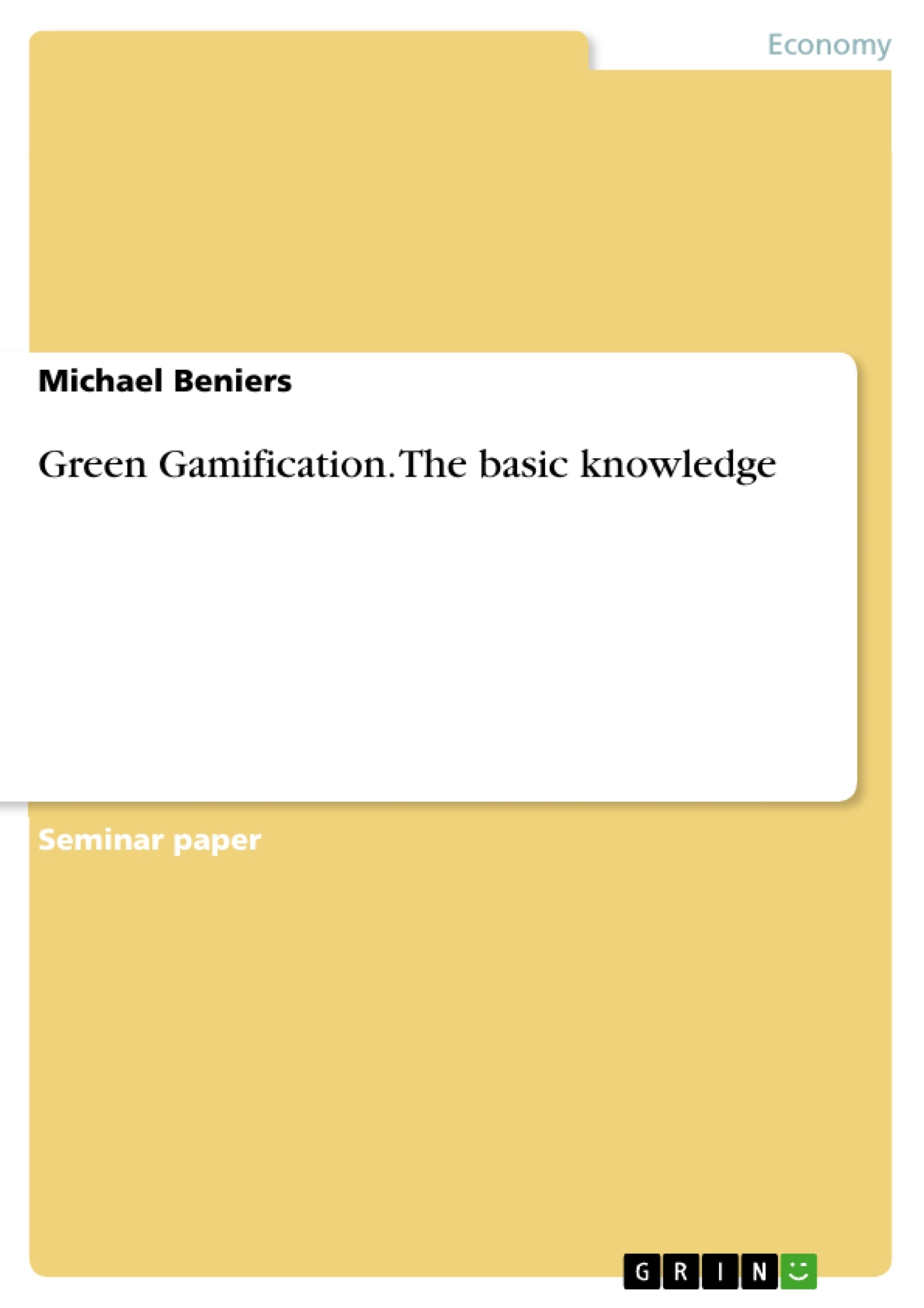This paper regards the theoretical basics of gamification. In the beginning, it tries to define and delimitate the term "Gamification". Afterward, it explains the psychological motivations behind the concept and presents the game design elements, which trigger these motivations. The third topic represents a basic guideline for good gamification design and concentrates on the topics target groups and meaningfulness. Finally, this paper focuses on the environmental area of green gamification. After an explanation, it regards some examples of green gamification and outlines some of the most important potentials as well as doubts about it. This paper gives just a general overview about gamification but represents a short summary of the basic knowledge. It is based on a comparative analysis of scientific literature and related sources.
Inhaltsverzeichnis (Table of Contents)
- 1. Introduction
- 2. Theoretical background
- 2.1. Delimitation of gamification from other concepts
- 2.2. Intrinsic and extrinsic motivation
- 2.3. Elements
- 3. Design of gamification
- 3.1. Target groups
- 3.2. Meaningful gamification
- 4. Green gamification
- 4.1. Examples of green gamification
- 4.2. Potential of gamification
- 4.3. Doubts and problems
- 5. Conclusion
Zielsetzung und Themenschwerpunkte (Objectives and Key Themes)
This paper provides a comprehensive overview of gamification, focusing on its theoretical foundations and application in the field of environmental sustainability, known as green gamification. The main objective is to explore the potential of gamification to influence pro-environmental behavior and promote ecological consciousness.- Definition and delimitation of gamification
- Psychological motivations driving gamification
- Key elements of effective gamification design
- Applications of gamification in environmental contexts
- Potential benefits and challenges of green gamification
Zusammenfassung der Kapitel (Chapter Summaries)
- Chapter 1: Introduction This chapter introduces the concept of gamification and highlights its growing significance in diverse fields. It discusses the history of using game design elements in non-game contexts, emphasizing its recent surge in popularity and application. The chapter also outlines the paper's structure, focusing on the theoretical basis of gamification and its application in green contexts.
- Chapter 2: Theoretical Background This chapter delves into the theoretical foundations of gamification, examining its definition and delimitation from related concepts. It explores the psychological motivations behind gamification, analyzing intrinsic and extrinsic motivations and their relevance in the design of gamified applications. The chapter concludes by outlining the essential elements of effective gamification design.
- Chapter 3: Design of Gamification This chapter provides a basic guideline for successful gamification design, focusing on the identification and consideration of target groups. It emphasizes the importance of creating meaningful gamification that fosters long-term motivation and engagement. This chapter lays the groundwork for understanding how to effectively design gamified applications in various contexts, including environmental ones.
- Chapter 4: Green Gamification This chapter explores the application of gamification in environmental contexts, highlighting its potential to influence individual behavior and foster pro-environmental thinking. It provides examples of existing green gamification initiatives in areas like home resource consumption, transportation, and waste disposal. The chapter also examines the potential benefits of green gamification and explores some of the doubts and challenges associated with its implementation.
Schlüsselwörter (Keywords)
Gamification, green gamification, intrinsic motivation, extrinsic motivation, game design elements, target groups, meaningful gamification, environmental behavior, ecological consciousness, pro-environmental behavior, sustainability, waste disposal, resource consumption, transportation.- Quote paper
- Michael Beniers (Author), 2016, Green Gamification. The basic knowledge, Munich, GRIN Verlag, https://www.grin.com/document/367081




